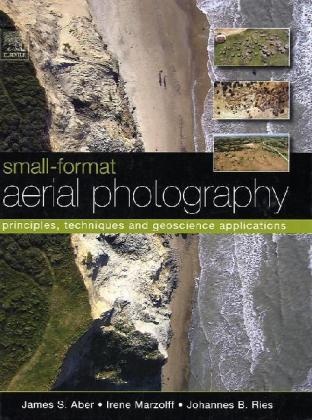Read more
As the need for geographical data rapidly expands in the 21st century, so too do applications of small-format aerial photography for a wide range of scientific, commercial and governmental purposes. This book presents the principles and techniques with an emphasis on digital cameras.
List of contents
Part I
Chapter 1: Introduction to small-format aerial photography
1-1. Overview
1-2. Brief history
1-2.1. 19th century
1-2.2. 20th century
1-3. Photography and imagery
1-4. Conventional aerial photography
1-5. Small-format aerial photography
1-6. Summary
Chapter 2: Basic principles of SFAP
2-1. Remote sensing
2-1.1. Ideal remote sensing
2-1.2. Actual SFAP
2-2. Common aspects of SFAP
2-2.1. Image vantage
2-2.2. Photographic scale and resolution
2-2.3. Relief displacement
2-2.4. Stereoscopic images
2-3. Photographic storage
2-4. Summary
Chapter 3: Photogrammetry
3-1. Introduction
3-2. Geometry of single photographs
3-2.1. Vertical photography
3-2.2. Tilted photography
3-2.3. Interior orientation
3-2.4. Exterior orientation
3-3. Geometry of stereophotographs
3-3.1. Principle of stereoscopic viewing
3-3.2. Base-height ratio and stereoscopic coverage
3-3.3. 3D measurements from stereomodels
3-3.4. Creating stereomodels with aerial triangulation by bundle-block adjustment
3-4. Quantitative analysis of photographs
3-4.1. Measuring and mapping from single photographs
3-4.2. Manual measuring and mapping from stereomodels
3-4.3. Automatic DEM extraction from stereomodels
3-5. Summary
Chapter 4: Lighting and atmospheric conditions
4-1. Introduction
4-2. Multiview-angle effects
4-3. Bidirectional reflectance distribution function
4-4. Multispectral effects
4-5. Latitude and seasonal conditions
4-6. Clouds
4-7. Shadows
4-8. Summary
Chapter 5: Photographic composition
5-1. Introduction
5-2. Basic elements of photographic composition
5-2.1. Oblique and vertical views
5-2.2. Linear features
5-2.3. Image depth
5-2.4. Pattern and texture
5-2.5. Color
5-3. Combining compositional elements
5-4. Photographs vs. human vision
5.5. Summary
Part II
Chapter 6: Cameras for SFAP
6-1. Introduction
6-2. Film camera basics
6-3. Digital camera basics
6-3.1. Types of digital cameras
6-3.2. Image sensors
6-3.3. Image file formats
6-4. Camera geometry and light
6-4.1. Focal length
6-4.2. Lens aperture
6-4.3. Shutter speed
6-4.4. Film speed or ISO rating
6-4.5. Camera exposure settings
6-4.6. Image degradation
6-5. Color-infrared photography
6-6. Camera capabilities for SFAP
6-6.1. Camera lens
6-6.2. Image sensor
6-6.3. File format
6-6.4. Camera type
6-6.5. Camera calibration
6-7. Summary
Chapter 7: Camera mounting systems
7-1. Introduction
7-2. Camera operation
7-3. Detachable mounts
7-3.1. Single-camera suspended rigs
7-3.2. Multiple-camera suspended rigs
7-3.3. Attaching suspendable mounts to a platform
7-3.4. Detactable modular unit mounts
7-4. Fixed mounts
7-5. Summary
Chapter 8: Platforms for SFAP
8-1. Introduction
8-2. Manned light-sport aircraft
8-2.1. Powered light-sport aircraft
8-2.2. Unpowered light-sport aircraft
8-3. Lighter-than-air platforms
8-3.1. Lifting gases
8-3.2. Helium blimp
8-3.3. Hot-air blimp
8-4. Kite aerial photography
8-4.1. Kites for SFAP
8-4.2. Kite-flying equipment
8-4.3. Ground operations
8-5. Drones for SFAP
8-5.1. Basic model airplane
8-5.2. Autopiloted model airplane
8-5.3. Powered paraglider
8-6. Pros and cons of different platforms
8-7. Summary
Chapter 9: SFAP survey planning and implementation
9-1. Introduction
9-2. Travel and equipment logis

